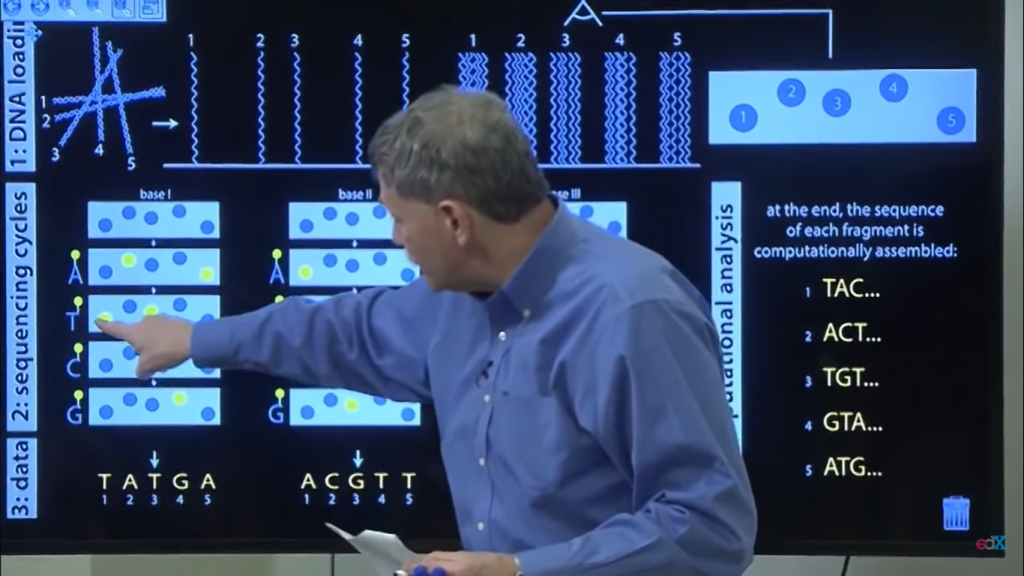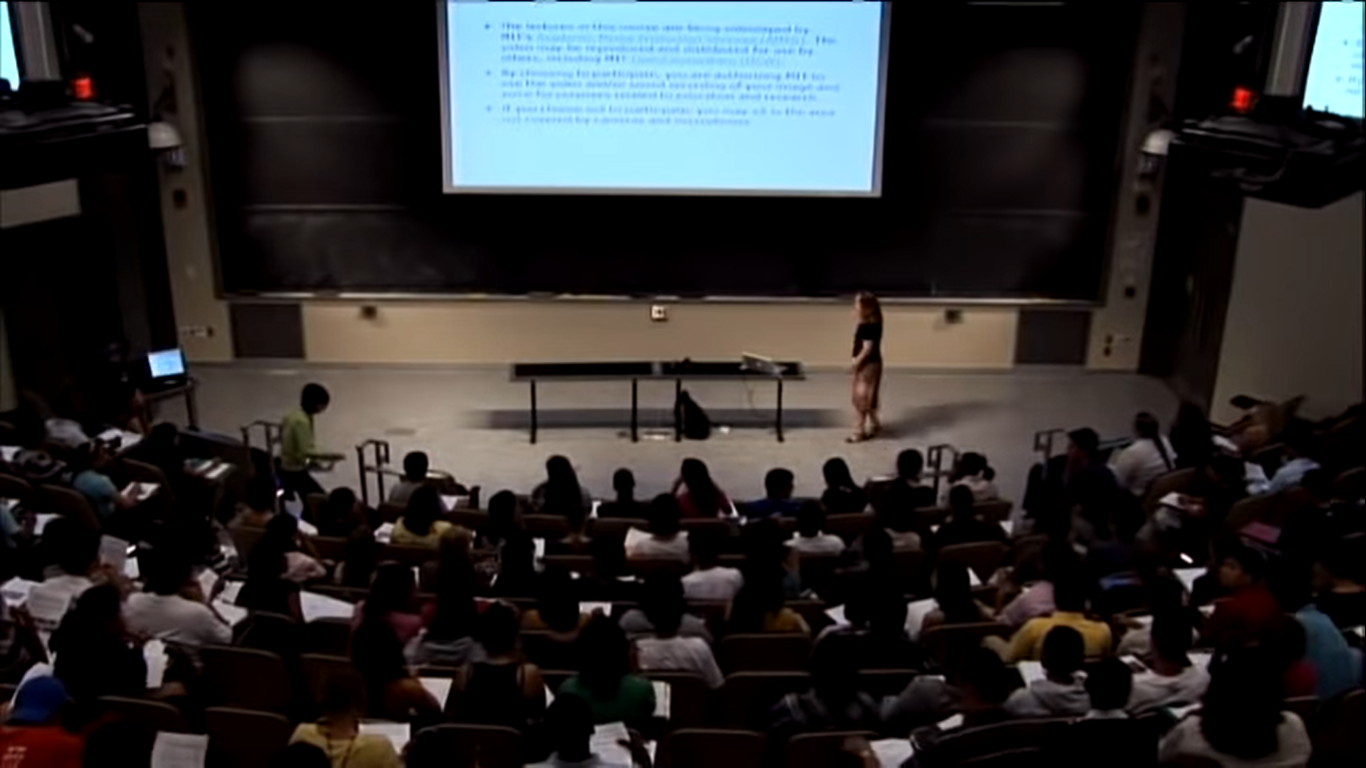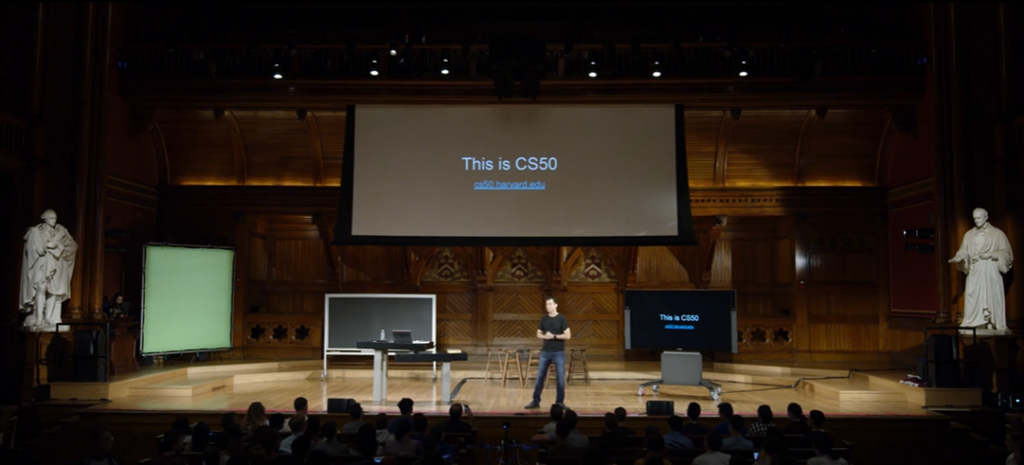For the past several months – not quite a year, yet, but more than half of one – I’ve been engrossed in the world of bioinformatics.
Biology and chemistry – perfectly scientific – meets data analysis and information engineering – perfectly statistical. As someone who tends toward raw science, the appeal of biology and chemistry in the midst of statistics and data science lured me in.
I’ve been following an extremely helpful pathway, kindly compiled by those over at the Open Source Society University. It is a four-year course designed mostly of MOOCs, and therefore perfect for people who would rather learn at their own time and their own pace.
Course 1: Introduction to Biology
After officially beginning the pathway, I was quite pleased to discover the first course was one which I had done previously, and not too long ago. A quick recap on the topics covered within that course sufficed, and I was well on my way to Course 2.

For all that “skipping”, as it were, the first course did grant me the advantage of several weeks, I must mention that this course is great. Taught mainly by Prof. Eric Lander, the course is engaging and very informative. The concepts are explained in great detail, and so thoroughly, that they are bound to stick in your mind. I would highly recommend this course to anyone wanting to get started in basic biology.
Course 2: Principles of Chemistry
I was very eager to begin the second course, which being all about chemistry, appealed to me a lot. However, it turned out to be a lot more advanced than I expected. I discovered, rather harshly, that my chemistry knowledge was rather feeble. Unable to understand the principles from the first lecture, The Importance of Chemical Principles, I was forced to dash my hopes of understanding the MIT course, and turn my gaze to Khan Academy, instead.

Rather disgruntled from this sudden transformation of my studies, from a MIT course down to high-school courses again, I nonetheless pursued Khan Academy’s chemistry track. I tried to bail out repeatedly, but bitterly discovered that watching a week’s worth of high-school chemistry videos hadn’t, unfortunately, given me the ability to understand Lecture 1: The Importance of Chemical Principles.
So, dismayed, I resigned myself to high-school chemistry again, and for the next couple of months, refrained from trying my luck at the MIT course.
Two months later, if memory serves, I revisited Lecture 1: The Importance of Chemical Principles, and I discovered, to my delight, that I could finally comprehend the lecture!
Very pleased with this turn of events, I eagerly set off to finally begin the course. Unfortunately, I encountered several hitches along the way – the basic knowledge of chemistry which had carried me till Lecture 1 failed me a few lectures later.
Thankfully, Khan Academy and Google came to my rescue again, and after skimming the Organic Chemistry and Biochemistry sections on Khan Academy, I could Google my way down the course.
Finally, several months and several hitches later, I reached the end of the winding journey that was 5.111: Principles of Chemical Science.
Course 3 & 4: Interactive Python 1 & 2
Buoyed by my latest success when it came to MIT Chemistry courses, I was quite happy to discover that the following two courses were easy content. Basics of Python is something I have studied in the past extensively enough – and repeatedly – that I felt quite confident to skim through two more of them, or skip them, entirely.
That is what I ended up doing. A brief scroll through the topics revealed that I already knew all the concepts covered, and therefore, decided to forgo doing the courses all together.
Course 5 & 6: Principles of Computing 1 & 2
After deciding to move past the basic of Python, I tentatively visited the next two courses, covering computer science and programming basics, offered by the RICE University. I had hoped my preliminary knowledge of computer science would mean a skimming would suffice, but unfortunately, I would have to watch a significant portion of the course.
Finding the course material not quite to my liking – with no offence meant to those at RICE who made the course freely available – I decided to instead go through Harvard’s famous CS50 course.

The early weeks covered topics which I already knew, so I could skim through it very quickly. I did learn more about C and Java than I previously knew. HTML and Python were recurring topics, as was binary.
I must admit to being irked a little bit by the extravagantly boisterous teaching method, but that is entirely a matter of personal preference.
Course 7: College Algebra and Problem Solving
This was a course that I began most reluctantly – maths is not my strong point, nor my favorite of topics. However, I decided to run the course parallel to CS50 to add a little interest to this section. However, for all my grand plans, I fell short and ended up speeding through CS50 instead. I justified this to myself by declaring that it was still study, so I wasn’t technically procrastinating.
Going forward: 2020
Having reached to this stage of the pathway took me longer than expected. I had hoped to finish the first year by 2019. However, I will now have to catch up with the last five courses of Year One in 2020 – all of which contain far more calculus than I am comfortable with.
Nonetheless, I will be pushing to finish the First Year as well as the Second Year within 2020. I fully intend to keep up with blogging and reviewing the courses as I go along.